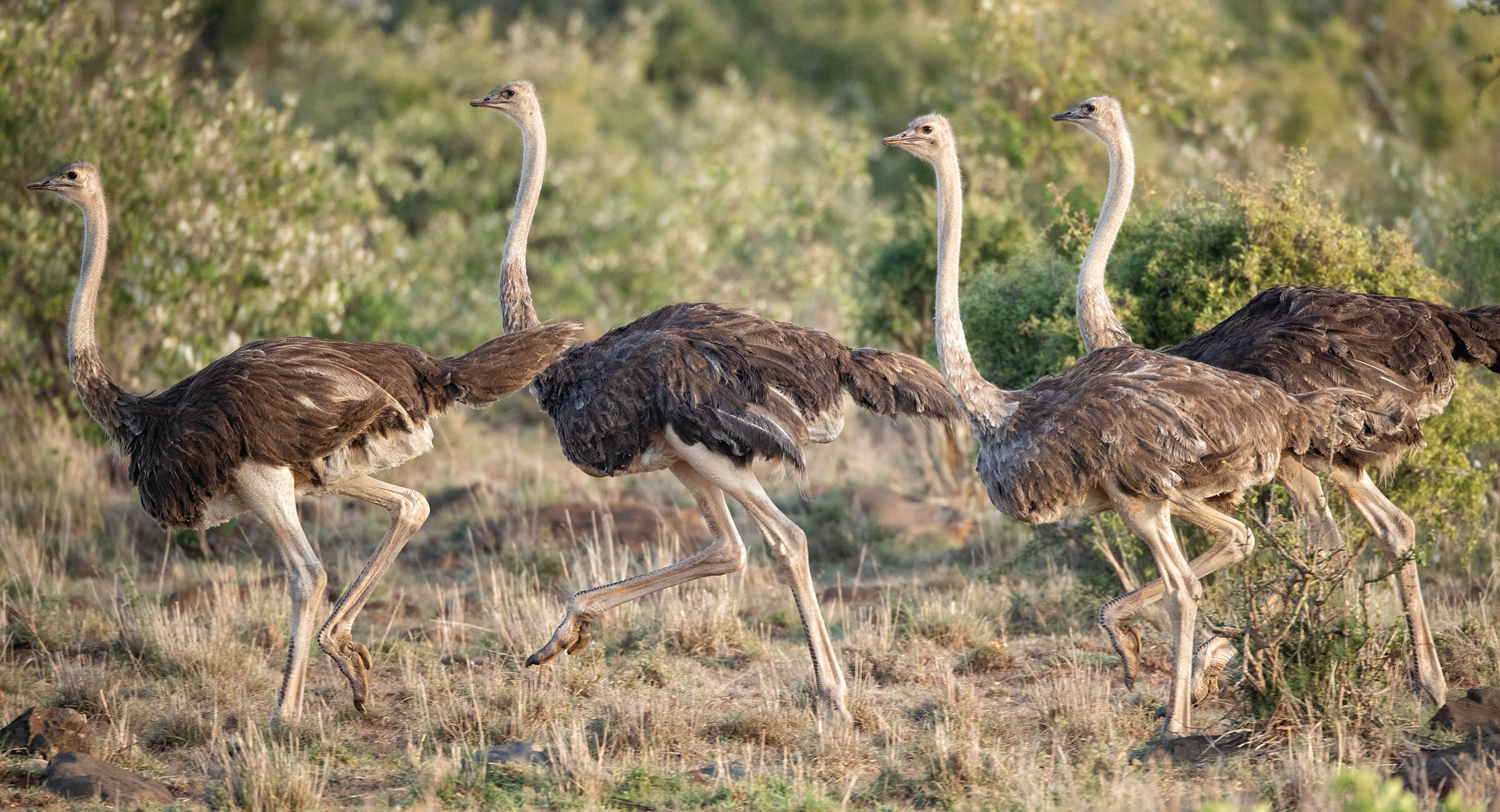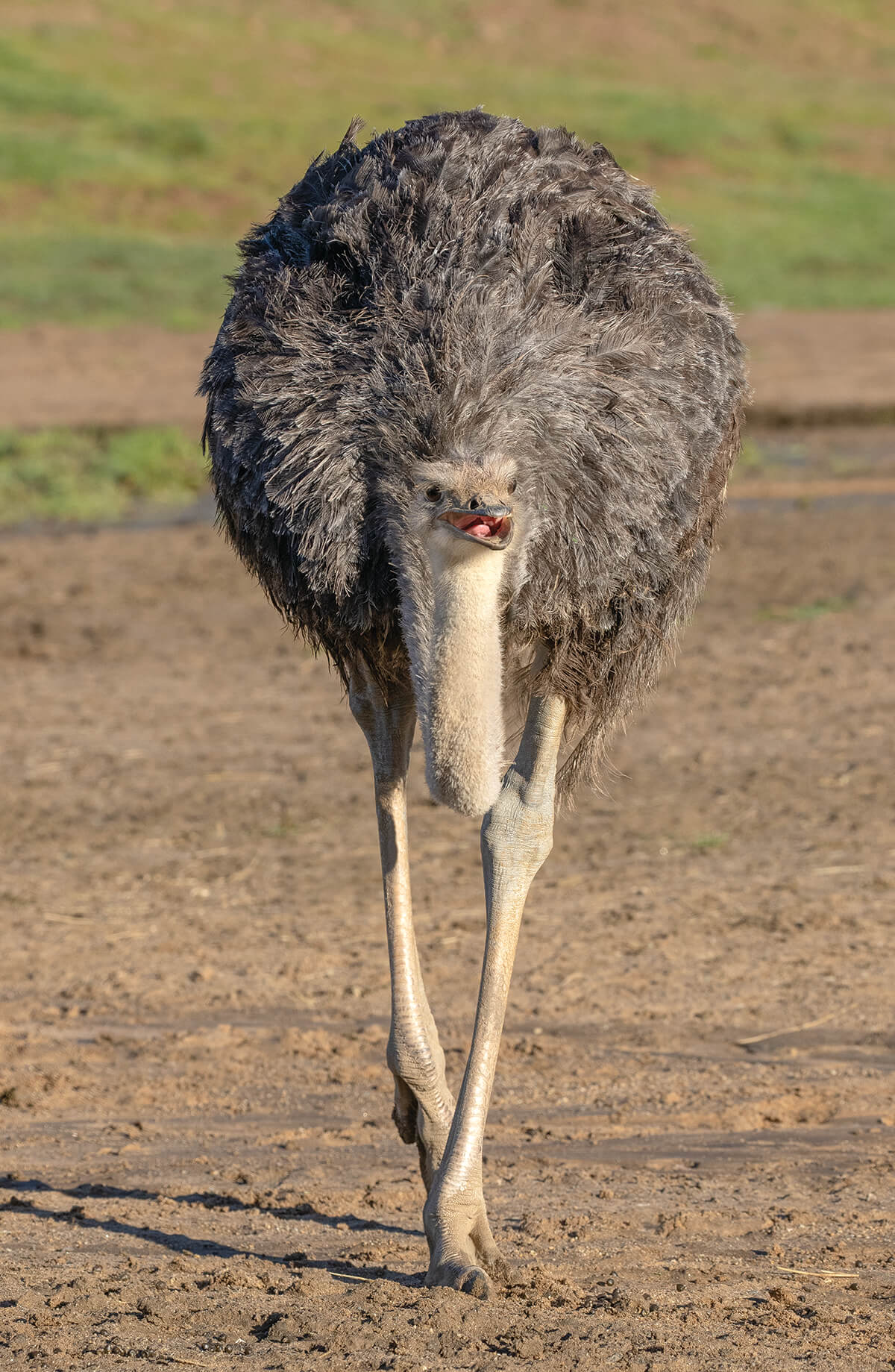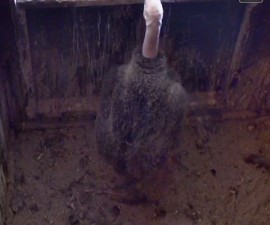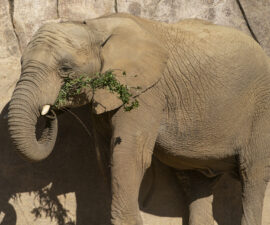BY Karyl Carmignani
Photography by Ken Bohn
No other avian species has the fast, fearless, and flexible résumé of the ostentatious ostrich. Taller than a front door and speedier than a downhill bicycle race, the long-necked ostrich is unmistakable. It is the largest and heaviest living bird species, reaching 320 pounds. It has only held that status for the last 150 years, though, after the elephant bird of Madagascar, which weighed as much as a grand piano, was wiped out by European explorers. The ostrich nearly suffered a similar fate: humans nabbed its eggs for food, jewelry pieces, and storage vessels, and latched onto its feathers for fighting and fashion accessories. For the past 130 years or so, the common ostrich has been farmed throughout dry regions of the world for its feathers, meat, oil, and skin, which has taken some hunting pressure off wild populations.
POETRY IN MOTION
Ostriches put their own personal spin on things, doing a breathless “dance” of sheer feather-fluttering joy.
Living in arid landscapes across Africa, the ostrich has stood tall through its checkered past. It has been associated with humans for centuries. Paintings and carvings in the Sahara dating back 10,000 years depict the mighty bird, and ostriches are illustrated in Egyptian hieroglyphs. Bushmen have hunted them for their meat, and adorned themselves with the feathered skins. The ostrich has survived the rise and fall of “feather fortunes,” over-collection of its eggs, and now desertification of its habitat. Overgrazing by livestock; longer, hotter dry seasons; and the encroachment of humans all impinge on its lifestyle. Discovering the quirks, adaptations, and truths about the ostrich will surely help us preserve this species for another epoch.
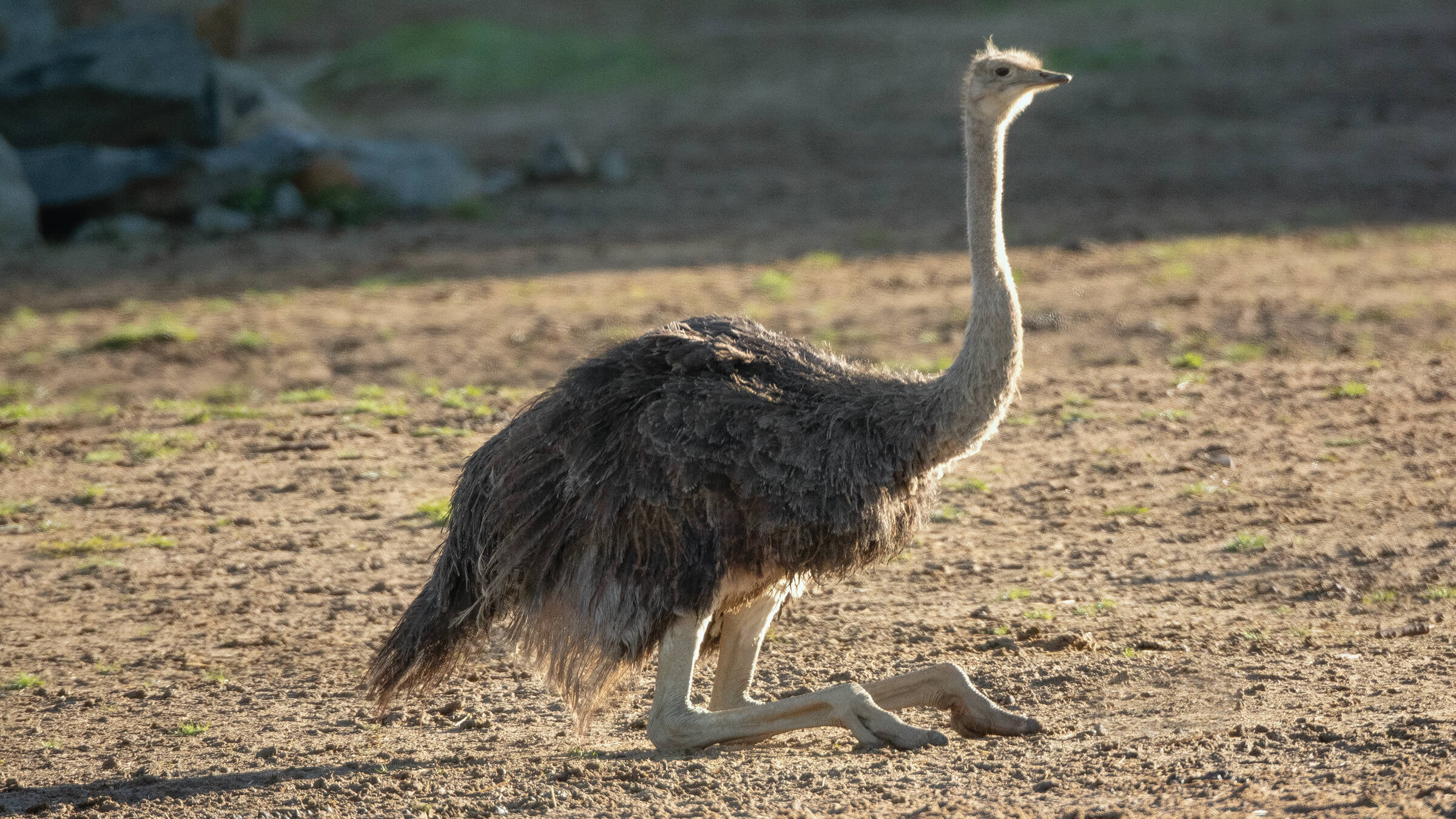
 An ostrich’s intestines are about 46 feet long, which is twice as long as an adult human’s.
An ostrich’s intestines are about 46 feet long, which is twice as long as an adult human’s.
PAGEANTRY ON THE PLAINS
The ostrich Struthio camelus is a dramatic balance of awkwardness and grace, vulnerability and survival. It is a plume-carrying member of the ratites, a robust bunch of flightless, leggy birds that includes rheas, cassowaries, and emus, as well as the pint-sized kiwi. While the ostrich’s 18-vertebrae-long neck and lanky legs may be easy targets for a predator, its gigantic eyes (two inches across!) survey the landscape to avoid danger, and those dinosaur-like legs are formidable weapons. The ostrich is the only two-toed bird (other birds have three or four toes) in the world, and its toe claw can do real damage to any threat. Its fluffy body is ideally positioned atop the legs, so its center of gravity is perfectly balanced for running and outmaneuvering predators. While its wings are not used for flight, they are handy rudders when barreling along at 40 miles per hour trying to ditch a pride of hungry lions.
Ostriches roam in flocks of about 10 animals, and groups may converge to form a flock of up to 100 birds. Alpha males gather a “harem” and mate with the alpha hen (and others). Females lay their large, dimpled, cream-colored eggs in a cooperative “dump nest,” which is a shallow, scratched-out bowl in the soil. This nesting strategy is a survival trade-off, as each gleaming, three-pound egg is a conspicuous potential meal, but the light color of the shell reflects the heat so the developing chicks don’t overheat. A nest may contain up to 60 eggs from various females, and the eggs on the outskirts may be destroyed by the alpha birds to make incubation more manageable.
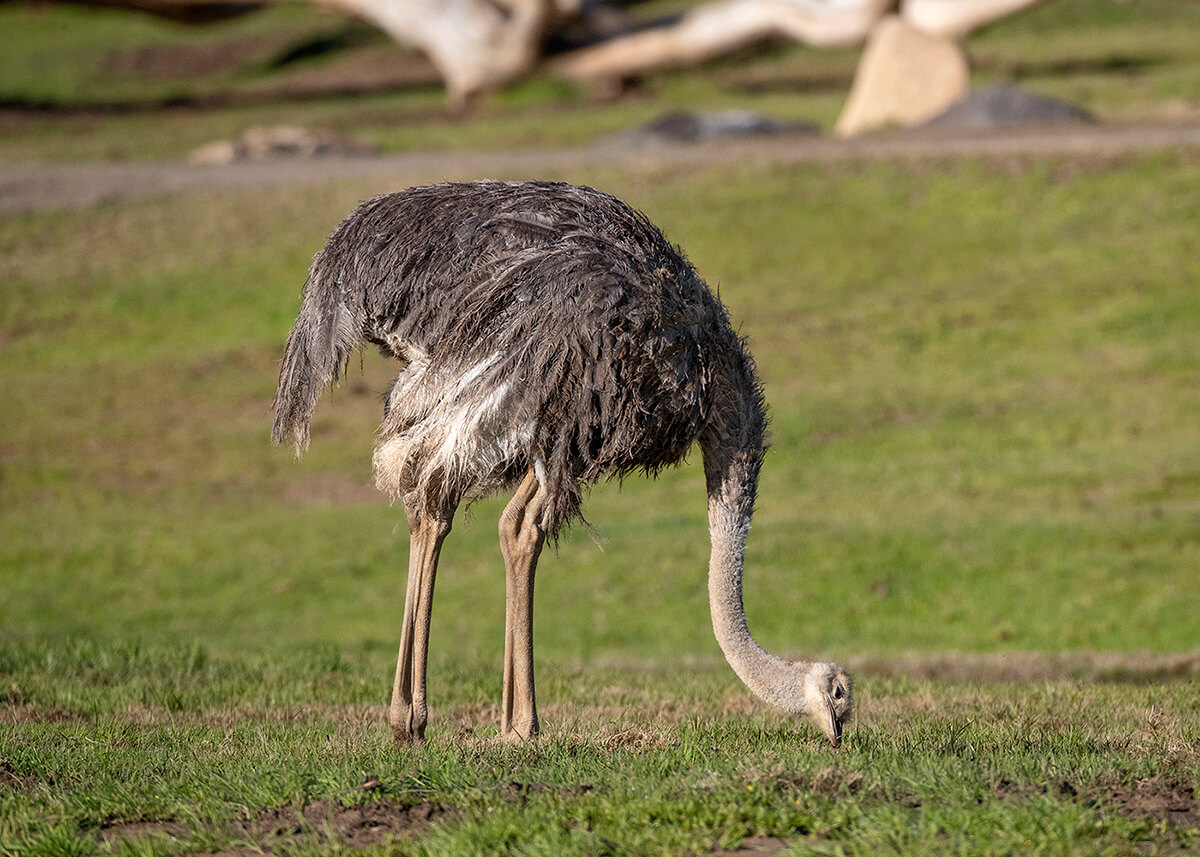
LOOKING FOR A MEAL
As omnivores, ostriches consume both plants and meat. They prefer roots, seeds, and leaves but will gulp down locusts, lizards, snakes, and rodents when they can catch them.
The dominant male and female incubate the eggs for about 45 days—the male takes the night shift. Baby birds emerge camouflaged by a collection of Morse code dots and dashes on their neck, and a body covered by silky, brown-and-black down. Hatchlings are about the size of a chicken and can scamper after the adult birds almost immediately. Chicks grow about a foot a month for the first seven to eight months.
It’s an entrenched myth that ostriches “bury their head in the sand.” They do not. The rumor likely took hold from seeing a bird reaching its head down to tend to the nest or laying its head and neck on the ground when it detects a predator—from a distance the giant bird appears to be a rock. Should danger approach closer, adult birds may limp away from a nest as a decoy. There is no time—or reason—to thrust one’s head in the sand!
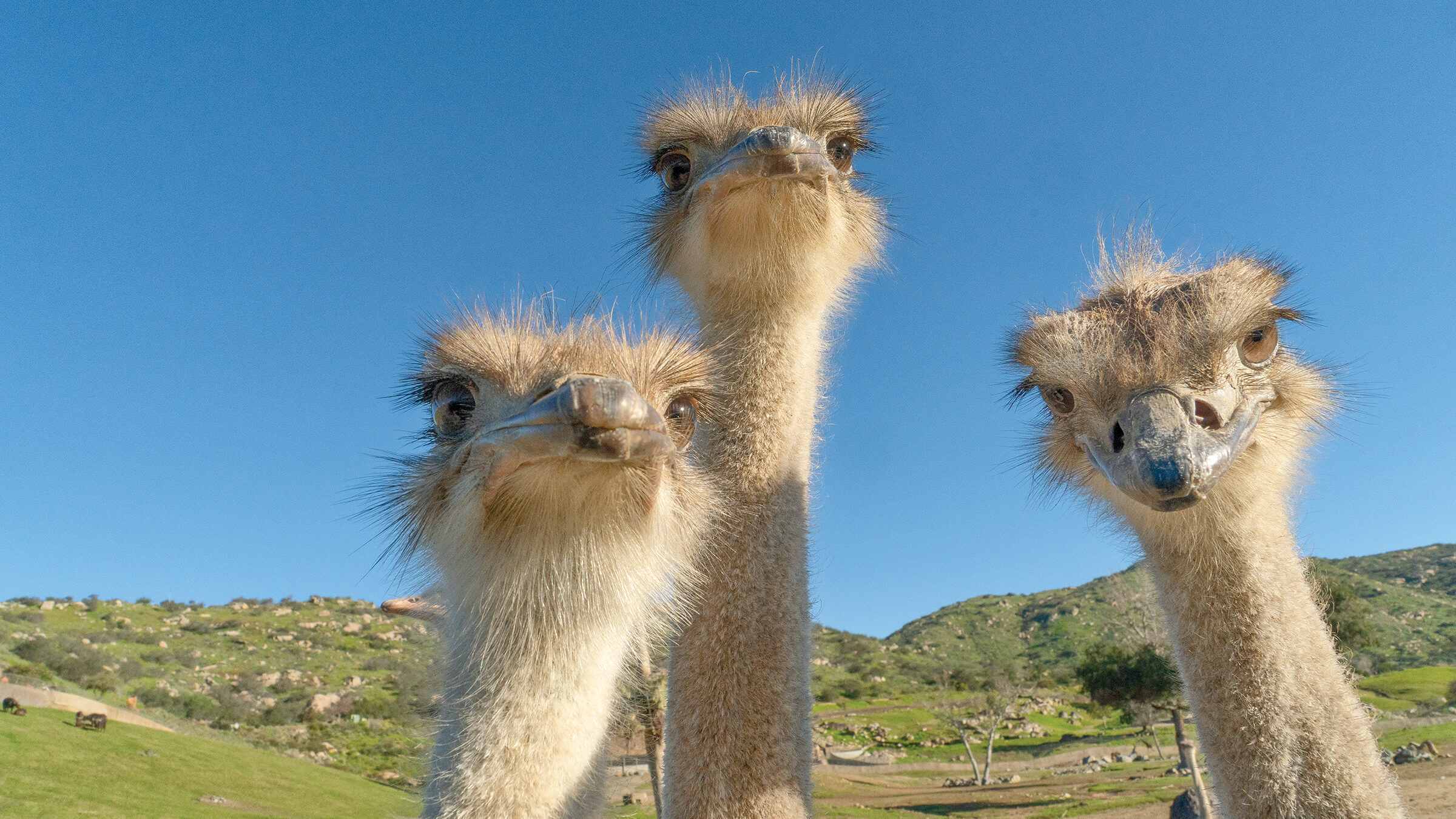
FEATHER LIGHT
What makes ostrich feathers so sought after? Since the ostrich does not fly, its feathers serve to protect it from the fierce rays of the sun (temperature regulation) and incubate eggs. Flighted bird feathers have rigidly barbed veins on either side of the shaft, and mostly lay sleek on the bird. Ostriches, on the other hand, have no such airborne constraints, so their feathers are symmetrical and as light and fluffy as meringue. Males have contrasting black-and-white plumage, while females sport a mishmash of gray and white “femina” feathers. The long, white plumes of the male play a role in wooing females and staving off rivals.
Ostrich feathers from either sex may be dyed a rainbow of colors for human use. And they are! The ostrich’s fashion contribution goes way back: Egyptian soldiers used ostrich feathers on their helmets, which symbolized fairness, truth, and justice. Royalty and rich people wore ostrich plume headdresses and accessories.
The feather market crashed around the start of World War I, because shipping lanes closed and feathers couldn’t be imported, fashions changed, and cars became popular—wearing an ostrich-plumed hat in a windblown car wasn’t practical. The feather market reawakened after World War II, mostly due to the demand for ostrich leather. These days, ostrich feathers are largely harvested from farm animals. The airy plumage still adds finesse to showgirl attire, home décor, and assorted costumes. Femina feathers are used in household dusters. One Ford plant in Spain even uses giant ostrich feather rollers to remove dust particles on vehicles before they’re painted.
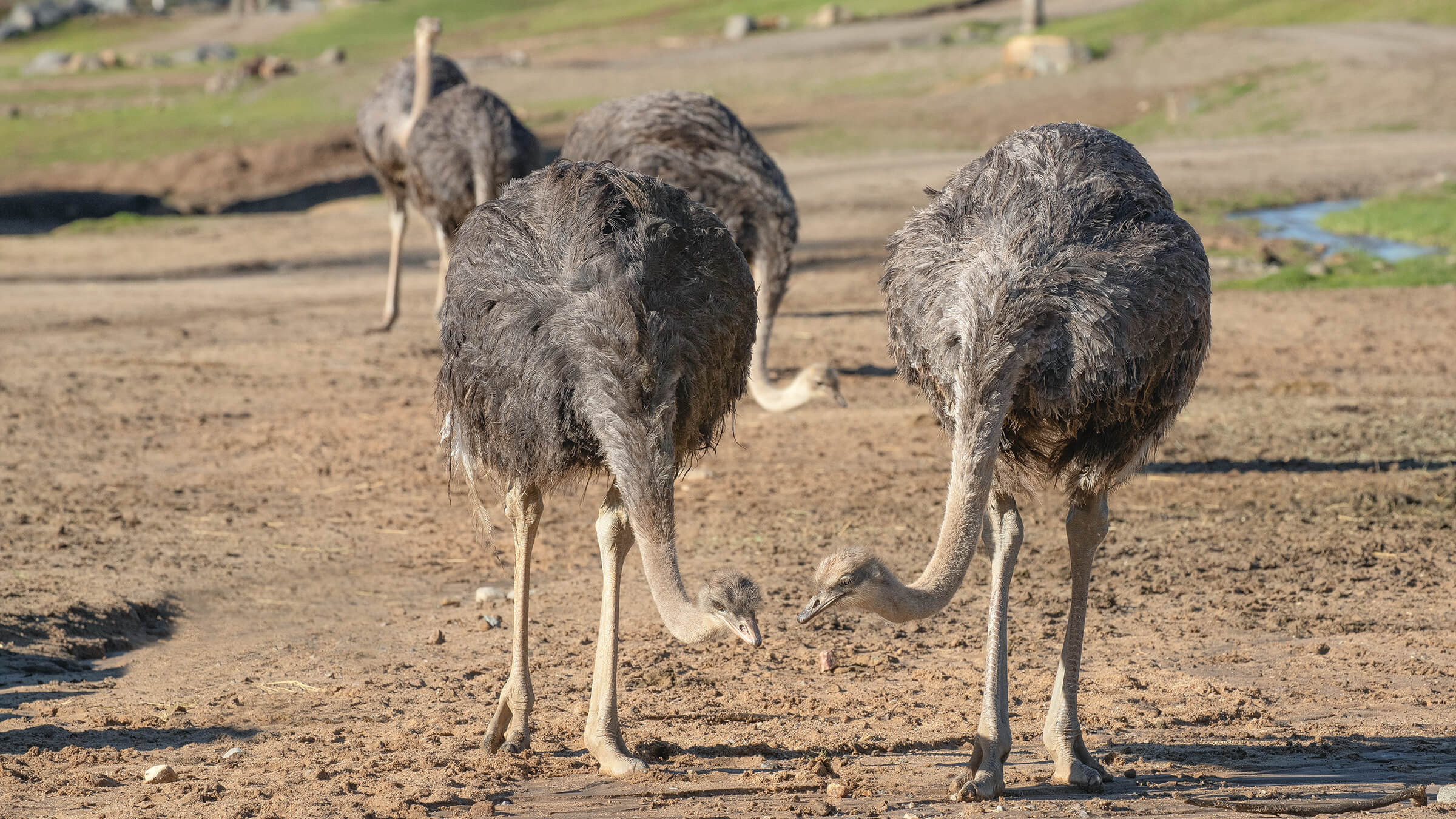
SAFARI PARK STRUT
Guests to the Safari Park may see a flock of five female ostriches from the tram in the South African field exhibit. They are named for spices: Cinnamon, Pepper, Chili, Paprika, and Clove. “Chili is the littlest and the pushiest,” said Lauren Cook, senior bird keeper at the Park. “She chases the mammals in the field exhibits, even the gemsbok!” Lauren explained that the birds aren’t aggressive, just very curious. And when a six-foot-tall bird has you in her sights, you take note. “They come up to our trucks and try to grab anything they can get, like our gloves,” she added.
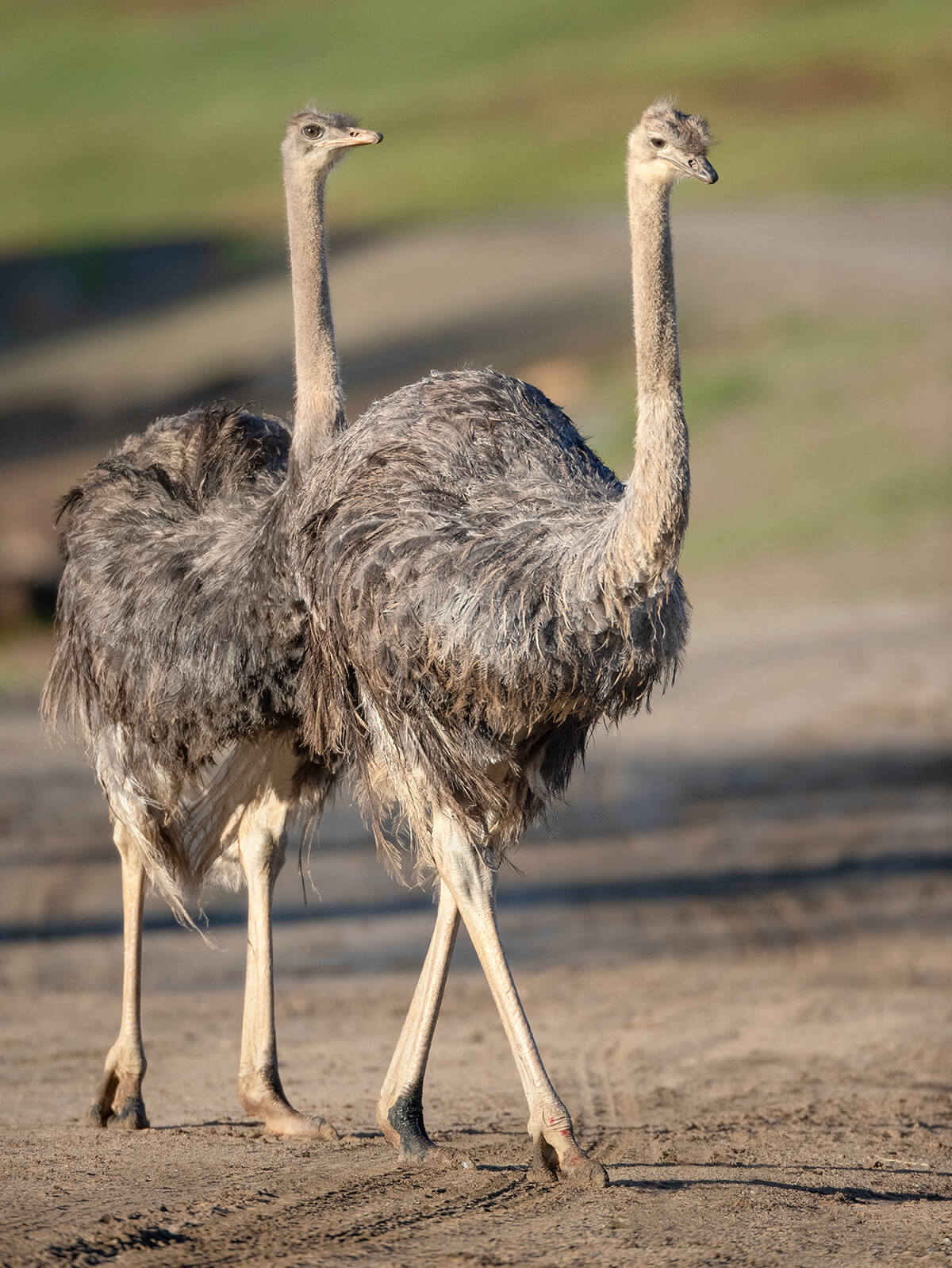
BIRD BFFS
Ostriches are social, flock-living birds that share a “dump nest” for their eggs. They are the only bird species with two toes on each foot. Their long legs can give a mighty kick to ward off threats, and they fiercely protect their chicks.
Ostriches eat mostly roots, leaves, and seeds, but also indulge in insects, lizards, and whatever they can catch. They swallow pebbles, which helps their gizzard grind up food. At the Park, they get a special pellet diet. “When they’re young, they get ‘Ostrich Grower,’ and as adults, ‘Ostrich Breeder,’ which contains more calcium for egg-laying,” said Lauren. In the wild, they get most of their water from the plants they eat. At the Park, they have drinkers to imbibe in. Three ostriches stand wing-to-wing, taking turns bending down to the water where they “poke, grab, and throw it back” in a peculiar yet poetic fashion.
Lauren said they love showers, and when the hose comes out, they shimmy and strut and get the water up in their wings. Perhaps the ostrich’s most charming behavior occurs when they are excited: they spin! In an avian ballet of sheer exuberance, they twirl and flounce and appear downright giddy. I’m giddy myself, standing among these prehistoric giants who want to grab my pen and inspect my jacket. Lauren expertly herds them back, and soon they bed down. One stretches her neck out on the earth; others sit on watch. We all keep our heads out of the sand.

